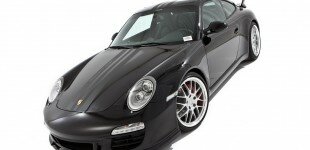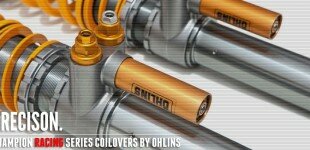Featured Posts
Protected: Beta Testing
Champion 911 GT1 EVO Featured!
Seeing old race cars for the first time in ages is a bit like bumping into an old flame, there is a natural tendancy to don the rose tinted spectacles, remember the good times and forget the bad. Racing imitates Life.
Those of you paying attention will know that Rod, Antonio and I were guests of Porsche AG at their Leipzig Factory earlier this year. Like all good hosts they made us feel very welcome and when they showed us up to the museum/display area it was an opportunity to meet up with some old friends, the Dauer 962, the TWR Joest WSC and of course the Champion Porsche 911 GT1 Evo. The distinctive livery of Dave Maraj’s team is unmistakable, having graced many Porsches and Audis in Endurance racing both sides of the Atlantic, culminating in a overall win at Le Mans in 2005.
But back to the 911 GT 1………..where did it come from?
The Fall………By 1992 the premeditated destruction of Group C Sportscar Championship by the FIA in favour of promoting Formula One brought the end of endurance racing in Europe, only Le Mans was strong enough to survive. The final formula of 3.5 litre F1 engined cars and high tech cars proved way too expensive even for manufacturers and there were no cars for privateers to buy, despite a valiant effort from Lola, so the grids dwindled to single figures.
The impulse to race long distances as opposed to sprints still existed and as ever where there is a will there is a way. Three Musketeers in the form of Stephan Ratel, Patrick Peter and Jurgen Barth launched the BPR Series in 1994. It was aimed at providing 4 hour GT races with 911s and Venturis as the staple diet on track. Barth, an ex Le Mans winner, was Director of the Customer Competitions Department at Porsche and Ratel was an executive/investor in the Venturi project, so the series gave them both a revenue stream. In 1995 the BPR expanded in both numbers and importance with the arrival of the McLaren F1 GTR and the Ferrari F40 and the addition of professional teams to run them.
Of course the arrival of the Woking supercar and the upgrade to Evoluzione for the F40 made the 911 somewhat second class even in the fearsome GT2 spec. A BiTurbo variant was explored but in reality there was no way that a 911 was going to get on terms with a F1 GTR with its carbon fibre chassis, mid engined layout and central driving position. Finishing down the order is not what Porsche or their customers had come to expect, so as the saying goes “Something must be done”
The solution was to create a mid engined supercar, which had as much in it in design terms from the 962 as the 911, no matter what was said at the time. The front unibody and windscreen (derived from the current 911) was attached to a steel subframe and behind that was a 3.6 litre twin turbo engine. In reality the car was a proper racing car but in order to get the car homogated as a GT car a road going version had to be produced. This completely undermined the principles that BPR had hitherto been run on, ie. take a real road going GT and adapt it for the track not homologate a racing car for the road. It would prove the undoing of a very fine race series.
After La Sarthe the fun and games really started. Porsche stepped up the pressure on the BPR to allow the 911 GT1 to race in BPR, Jurgen Barth’s position was somewhat compromised with his dual roles and loyalties. The exisiting teams, still reeling from the drubbing they had received in France, were adamant that the 911 should stay away, it was not eligible they argued and was outside the spirit of the regulations. As a temporary solution, and in order to not destroy the 1996 title race, eventually the Porsche was allowed to start but would not be able to score points. At the first race after the decision, Brands Hatch, Stuck and Boutsen drove away from the opposition as if in a different class, a feat that they repeated at Spa a few weeks later. It was a drive in the country with both pilots barely breaking into a sweat.
More Photos and the rest of the article here
Leave a Reply
You must be logged in to post a comment.
















